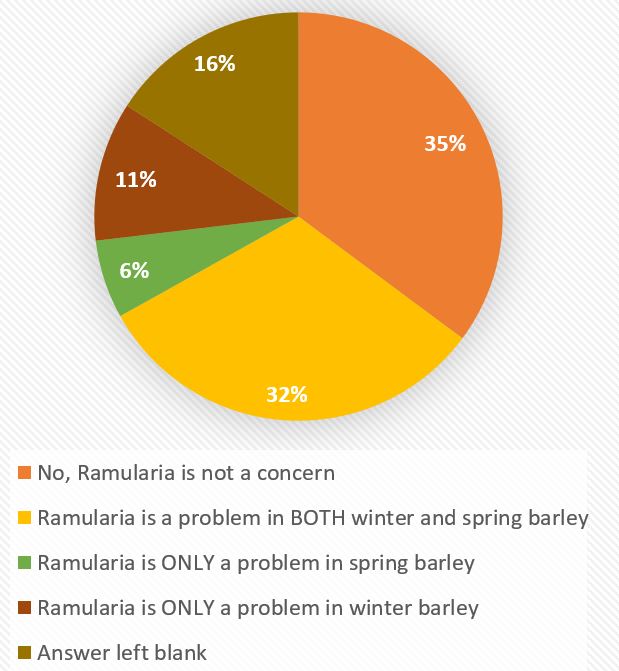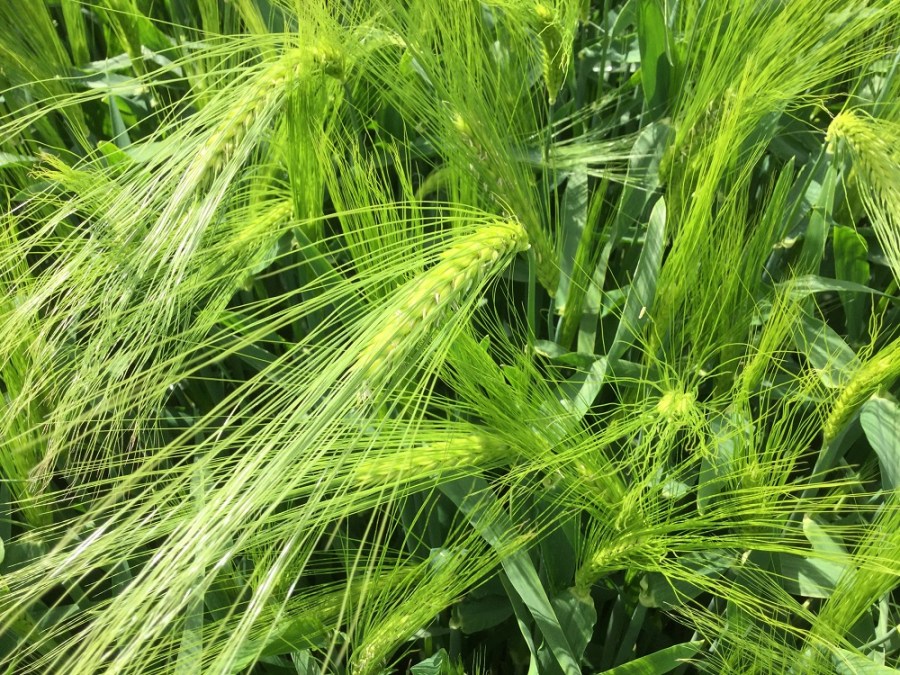A recent survey carried out by CPM and Adama shows barley growers are responding to calls to mix modes of action. But are programmes equipped for a changing picture on certain diseases?
Diversity of modes of action is a great management tool.
By Charlotte Cunningham
The development of single-site chemistry has revolutionised crop management and vastly improved efficacy against disease in cereals. However, as chemical control has become a more routine part of crop management, resulting in a heavier reliance on such products, resistance has built up, according to plant pathologists.
Good resistance management comes down to minimising the level of exposure the target pathogen has to the fungicide, they advise, and there’s been increased pressure recently on wheat growers to reduce chemical exposure. But there’s also evidence crucial products used in barley falter in their effectiveness, introducing a whole host of new challenges for growers of the crop.
Results of a recent survey conducted by CPM and Adama suggest growers are responding to this threat, however. Almost half of respondents (49%) use a mix of modes of action when treating barley and limit the frequency of single-site chemistry (see chart). “Mixing modes of action to stop resistance building up is a key part of any resistance management strategy,” explains Maddy Vaughan, independent agronomist at Indigro.
Which of the following best describes your main approach to fungicide resistance in barley diseases?

In barley diseases, the main single-site controls are SDHIs and azoles but there are signs of resistance issues with these chemicals, adds Andrew Bailey, technical specialist at Adama. “Introducing diversity into the fungicide programme makes resistance more difficult.”
A small proportion of growers in the survey (13%) said their main approach to prevent fungicide resistance was using multisite chemistry, e.g. folpet or chlorothalonil. While it’s often more of a focus in wheat, it should be considered for the same reason by barley growers, says Andrew. “Multisite chemistry, such as folpet in Arizona, can be really useful for ramularia control. It’s good when other chemicals are struggling and helps protect the all-important single-site chemistry – growers shouldn’t lose sight of how much of a difference it can make.”
However, while multisite chemistry has shown evidence of activity against rhynchosporium and ramularia, there’s limited control of net blotch and mildew, so the method of control needs to be tailored to the on-farm disease pressure, says Jonathan Blake, principle research scientist at ADAS.
So what is the best way for growers to tackle fungicide resistance? Having an efficient strategy in place is key. “The two main things growers should do is identify which diseases crops suffer from and choose products with ingredients that are active on those particular diseases,” he adds.
More than a quarter of farmers said their main approach to fungicide resistance was utilising varieties with a high disease rating. “As chemistry looks less effective on pathogens, it’s reasonable to look at safer varieties,” says Jonathan.
As part of an integrated management approach, it’s becoming more important to look at variety disease profiles, adds Andrew. “It’s a great tool to have in the armoury.”
Particularly with barley, there’s a wide choice of varieties with robust disease profiles, however, it’s important not to overlook chemical controls, he adds. “Variety choice certainly minimises risk, however, varietal resistance shouldn’t be solely relied on – there’s definitely still a need for fungicide inputs.”
Maddy agrees: “Varietal choice can help reduce incidence but influences such as the weather can affect the severity of disease pressure, so it’s important to tailor the programme to the individual farm.”
While variety choice is undoubtedly an important factor, one issue barley growers face is that the markets often dictate variety preference, she adds.

Proportion of spend on barley fungicide

When it comes to variety choice, the survey revealed winter hybrid type Bazooka as the most popular, with the variety grown in 17% of
situations. Growers noted its consistency and ability to compete with blackgrass. “This isn’t a surprise at all – Bazooka is a vigorous grower, stands well and is robust in terms of disease,” says Andrew.
Bazooka, KWS Cassia and Propino presented themselves as growers’ most popular choices – but while they do command a large proportion of the market, it’s important not to overlook other options, adds Jonathan. “Varieties like RGT Planet actually offer really good control against both rhynchosporium and ramularia.”
As arguably one of the key barley threats and causing up to 40% yield losses, it’s no surprise that rhynchosporium was growers’ top disease challenge, with 56 out of 178 participants ranking it as their biggest problem, followed by net blotch.
“Both of these really are key diseases for barley growers to control,” explains Andrew. “Rhynchosporium in particular is the disease that growers are designing their fungicide programme around.”
While rhynchosporium is a significant threat, growers can still get control, explains Jonathan. “Reassuringly, there are a number of modes of action that are still very effective against rhynchosporium. SDHIs, strobilurins and azoles all offer control, but targeting crops early is key.”
Unfortunately, the outlook isn’t so bright for net blotch. “SDHI resistance is increasing, but luckily, azoles don’t seem to be affected, meaning we’re becoming more reliant on them, so a mix of modes of action is essential.”
Traditionally ramularia was a disease seen only in the north of the UK. But its presence is becoming more widespread, with cases seen as far south as East Anglia last year. However, the survey revealed it was the least concerning disease, with only eight growers stating it as their biggest challenge.
“While many growers might not be perceiving this as a threat just yet, what is concerning is the potential resistance problem,” notes Andrew. “In trials I’ve seen the performance of prothioconazole-based treatments slip in terms of ramularia control. But they still seem to be providing control in the field which is maybe why it’s not such an issue for growers yet.”
While control may not be an immediate concern for growers, it’s important to know how to tackle ramularia, he adds. “The trouble is, in barley, ramularia can be asymptomatic – you just don’t see it.”
The late appearance and lack of awareness about ramularia could be the reason growers don’t see the disease as a major challenge yet, suggests Jonathan. “Ramularia is often seen later in the season so it takes real observation to notice its presence. It’s often commonly mistaken for other things too, so growers may not realise how severe the problem is.”
So, while the experts believe the effects of ramularia will soon become more prevalent, just how many growers are actually affected by the disease? According to the survey 35% of farmers said their crops don’t suffer from the disease, while 32% said both their spring and winter crops had been affected (see chart below).
Do your crops suffer from ramularia?

Perhaps more importantly, 61% of growers said they hadn’t noticed any reduction in disease control from the usual ramularia/T2 applications. “While many are still getting a good level of control, it’s becoming more of a problem,” adds Maddy.
Despite this, over the past few years there have been significant changes in resistance to chemistry for ramularia control, says Jonathan. “The level of control offered by SDHIs and azoles has noticeably altered. In two trials last year, the chemistry saw no protection against ramularia. However, chlorothalonil seems to be okay.”
It’s no secret that a robust fungicide programme is the key to maximising both productivity of a crop and protecting it from yield-robbing diseases. When asked about the components of their fungicide programme – for both winter and spring barley – 47% of farmers said an azole product at T1 made up the biggest proportion of their programme.
“The T1 stage is critical for both winter and spring barley, so its popularity isn’t surprising,” says Andrew. “More interestingly, what is good to see is that a variety of chemistry is being used by growers, with many using a combination of SHDIs, azoles and strobilurins. Diversity of modes of action is a great management tool.”
However, while azoles are undoubtedly the backbone of disease management, in order to protect against resistance, it’s advisable not to go straight in with just an azole, warns Maddy.
When asked how they apportion the spend of their fungicide programme, 48% of winter barley growers and 46% of spring barley growers said T1 accounted for almost half of their spend, although there was a noticeably bigger spend at T0 on winter barley than for spring. “Unlike wheat, the T1 stage is much more important – tackling disease at this time improves resource capture which improves tillering and grain number per ear, which can increase yield in this ‘sink-limited’ crop,” explains Jonathan.
Targeting crops at T1 is essential for disease management, but T2 can also be a really crucial stage which is becoming more important for tackling ramularia. So it comes as no surprise that the survey revealed the proportion of spend at T2 was also high. In winter barley crops, growers attributed 38% of their total spend to T2, whereas 47% of the spend went towards the same stage for spring barley growers. “For optimum control against ramularia it’s essential to make sure you’re targeting barley crops at T2,” concludes Jonathan.
of awareness about the signs of ramularia is one of the main reasons growers don’t perceive there to be problems on their farm. So what are the critical symptoms? Jonathan Blake explains.
There are some significant characteristics that stand out – the four “R’s” of ramularia:
- Rectangular lesions
- Chlorotic ring
- Reddish colour
- Reversible (the lesion is the same on the underside of the leaf as it’s on the top
Blackgrass resistance – lessons learnt
Blackgrass has become a major problem for growers over the past few years, and resistance to chemical controls has been driving this, explains Maddy. “Blackgrass has become a really big problem, largely on the back of an over reliance on chemicals, causing resistance.”
With chemical solutions limited, many have turned to spring cropping options as a remedy against this yield-robbing weed, so it’s no surprise that when asked about their spring barley planting area, growers revealed increases in the amount of spring barley planted in 2018 compared with 2017 – 32,755ha in 2017 vs 34,676ha in 2018, across the survey base of 178 respondents (see chart below).

“Winter barley plantings seem to have plateaued while spring barley popularity is ever increasing due to the role it plays in blackgrass control,” explains Andy. “The threat of blackgrass has become so great that it got to the point where growers had to do something radical, and spring cropping, particularly spring barley, is very competitive in terms of blackgrass management.”
Top tips to for an effective resistant management strategy
- Identify and understand the disease pressures on your farm.
- Get a sound understanding of how the disease cycle works and what you can do to break the cycle.
- Mix modes of action whenever possible.
- Use variety choice as another method of boosting disease resistance.
- Keep dose rates as correct and accurate as possible
- Don’t expose chemistry to potential resistance build up.




